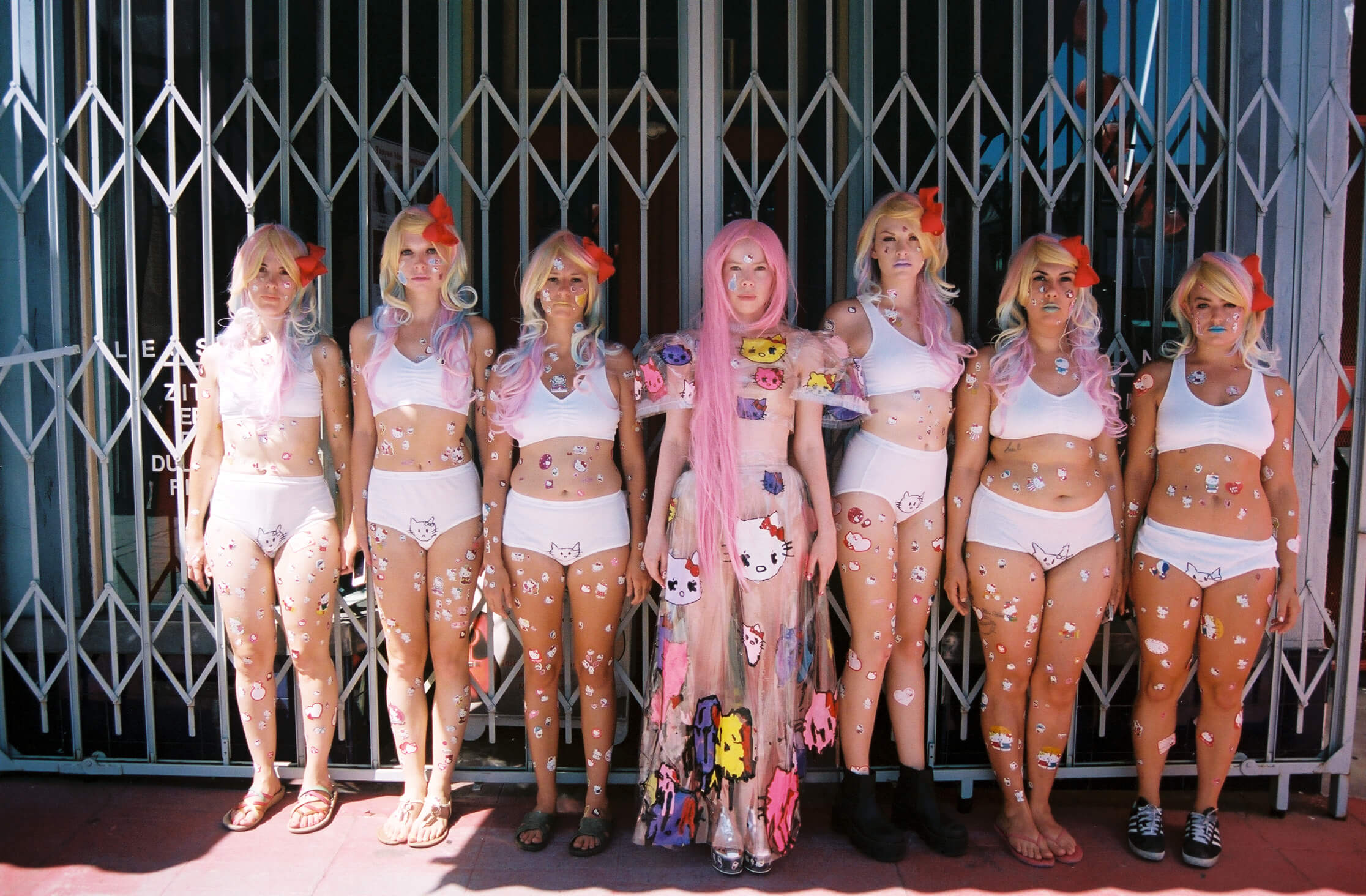

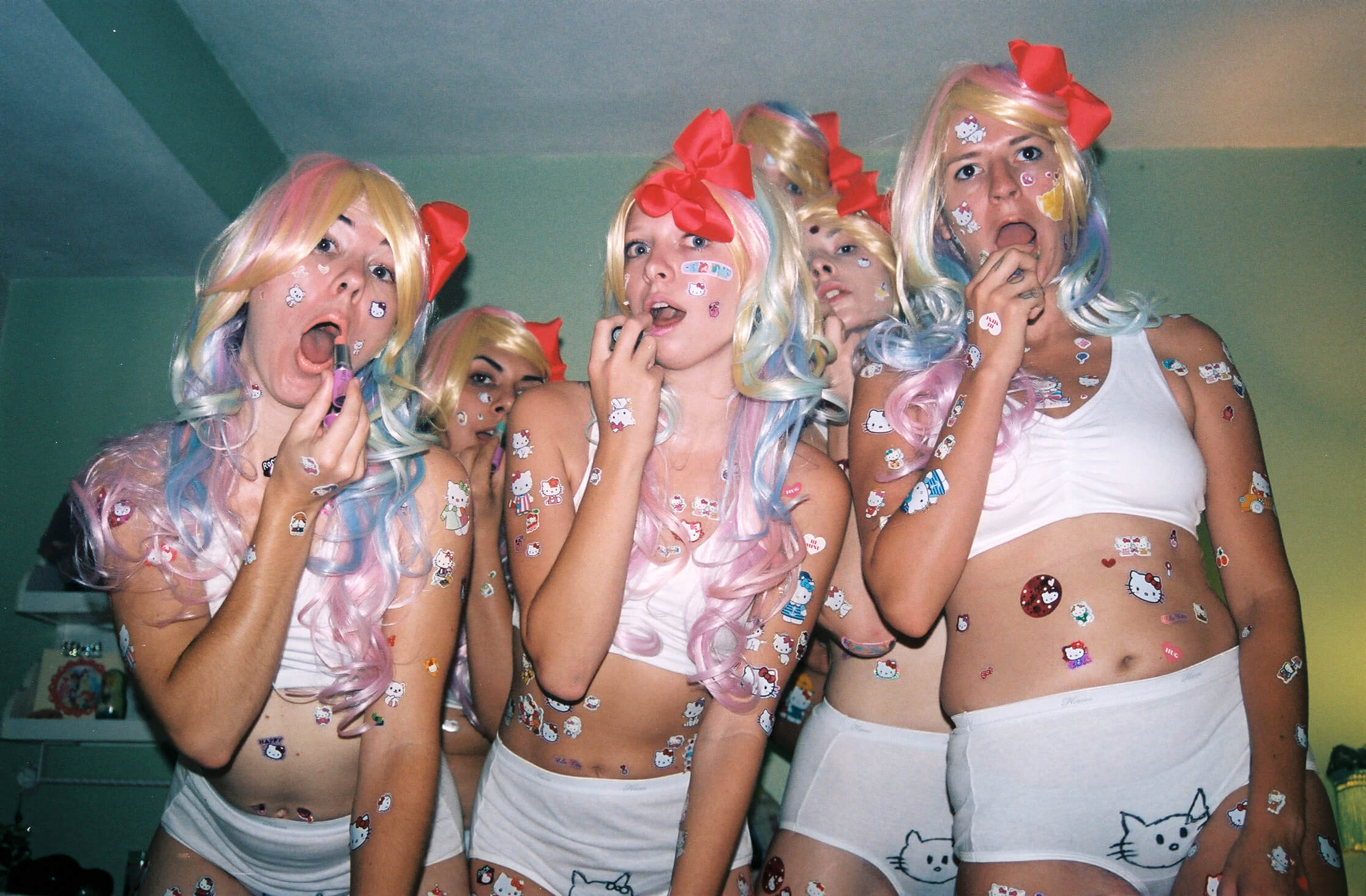
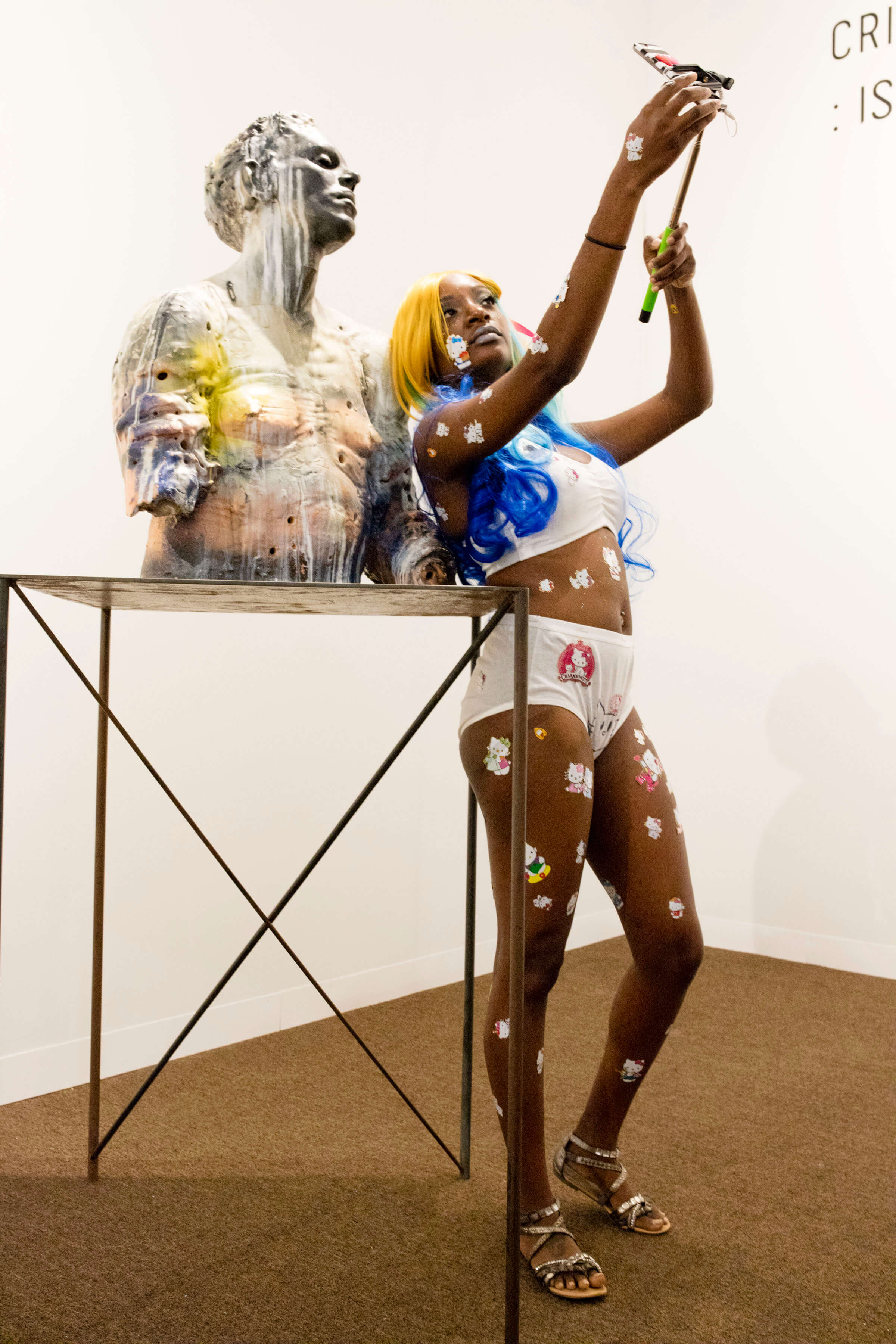
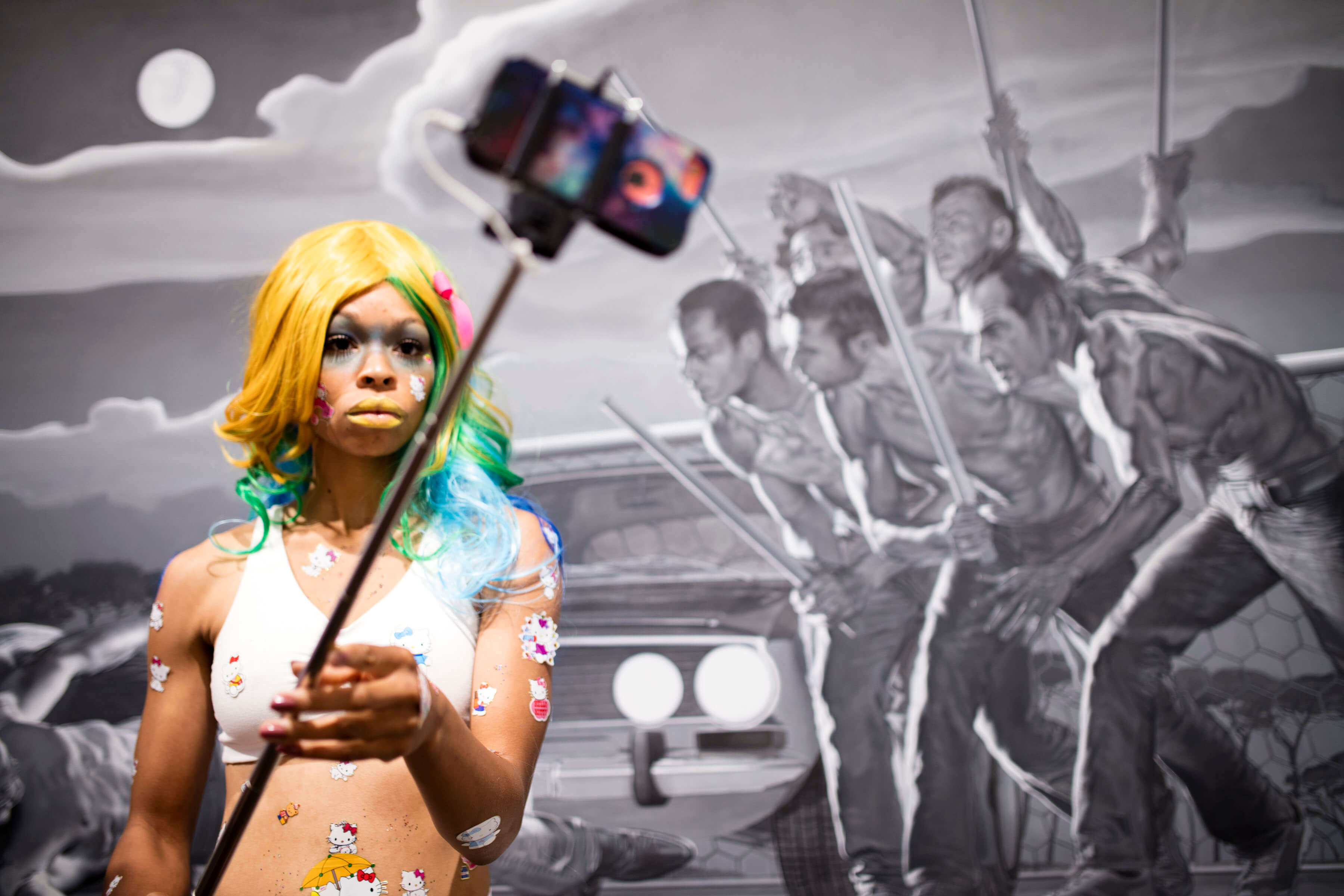
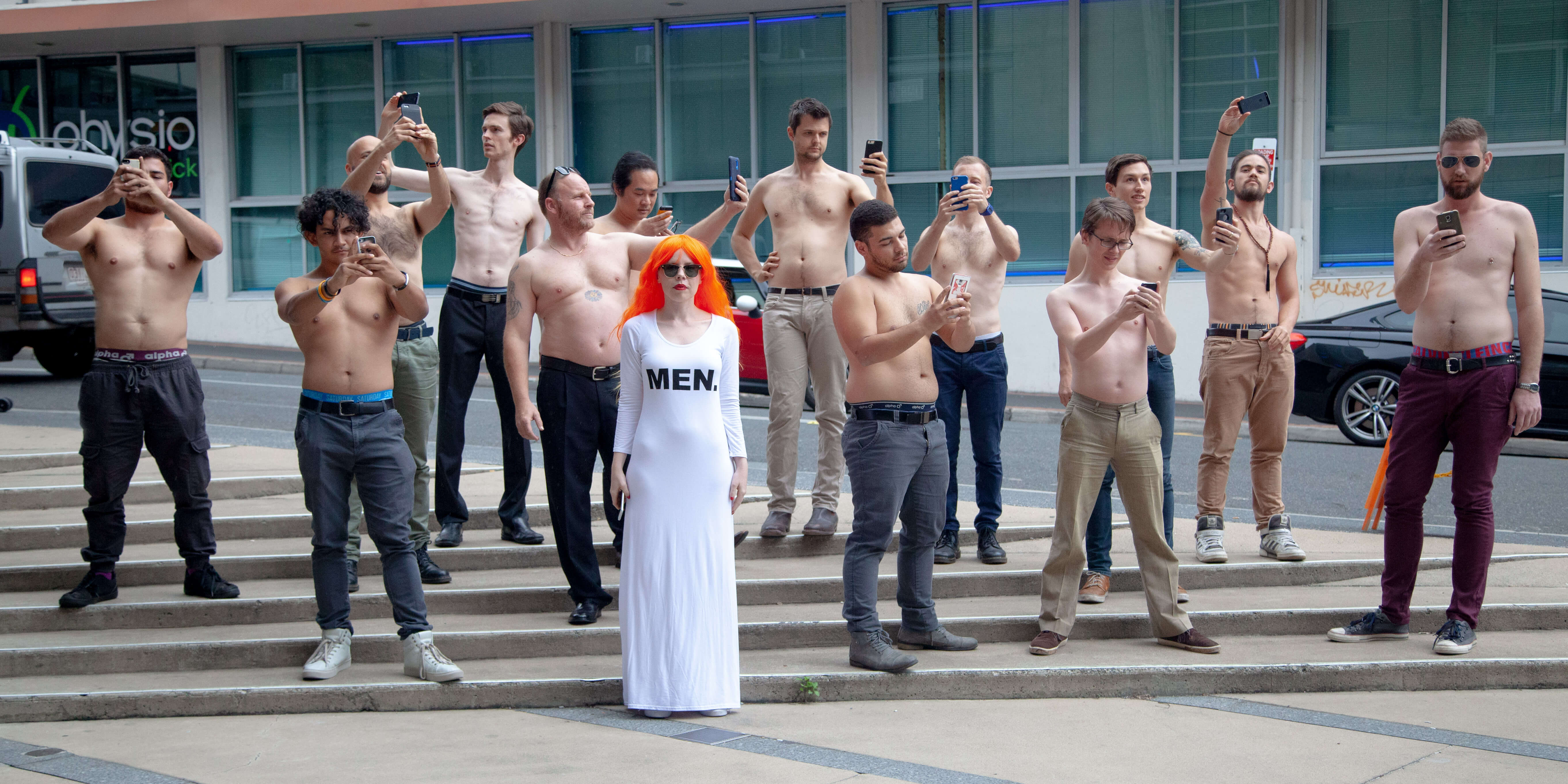
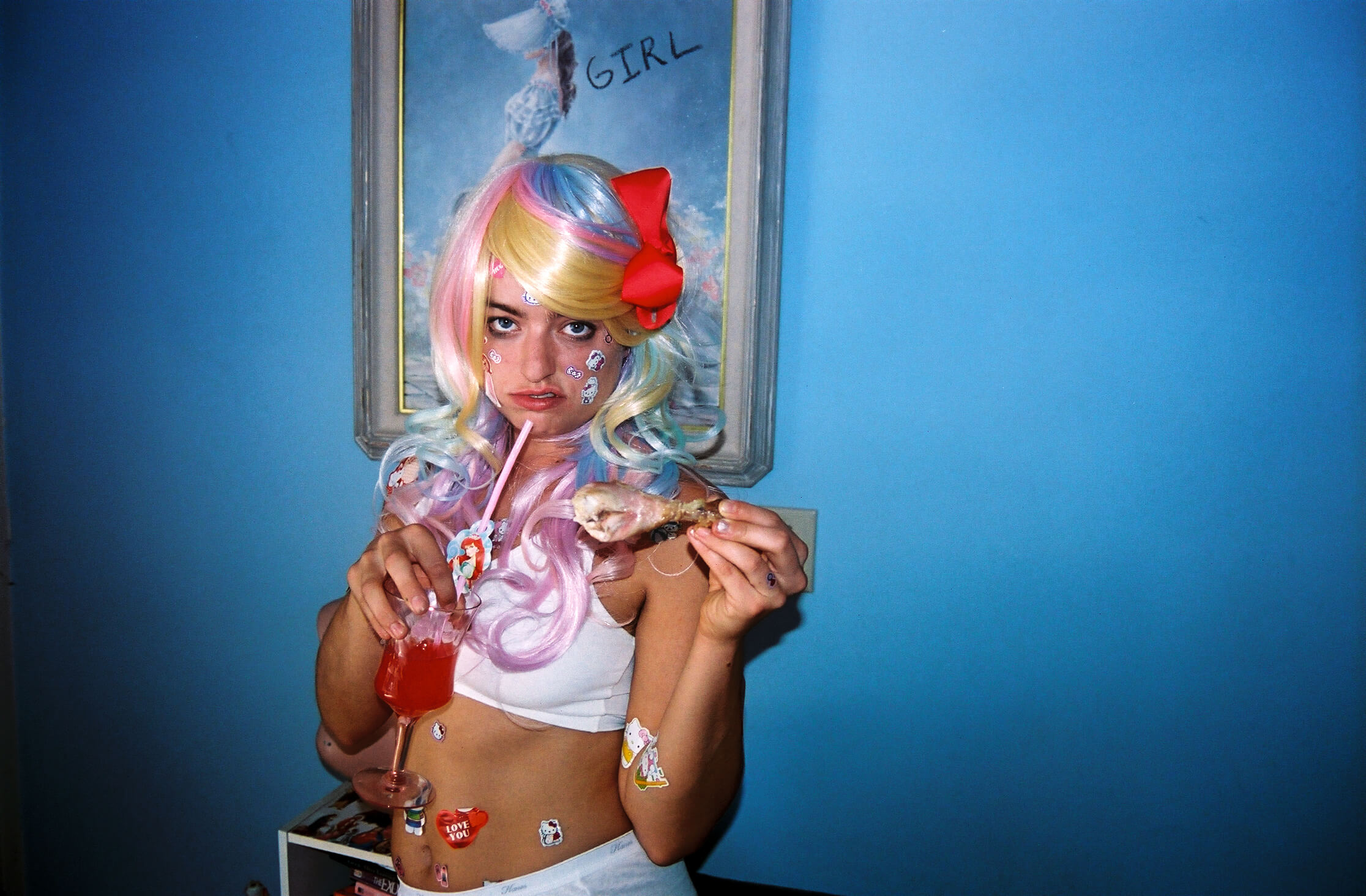
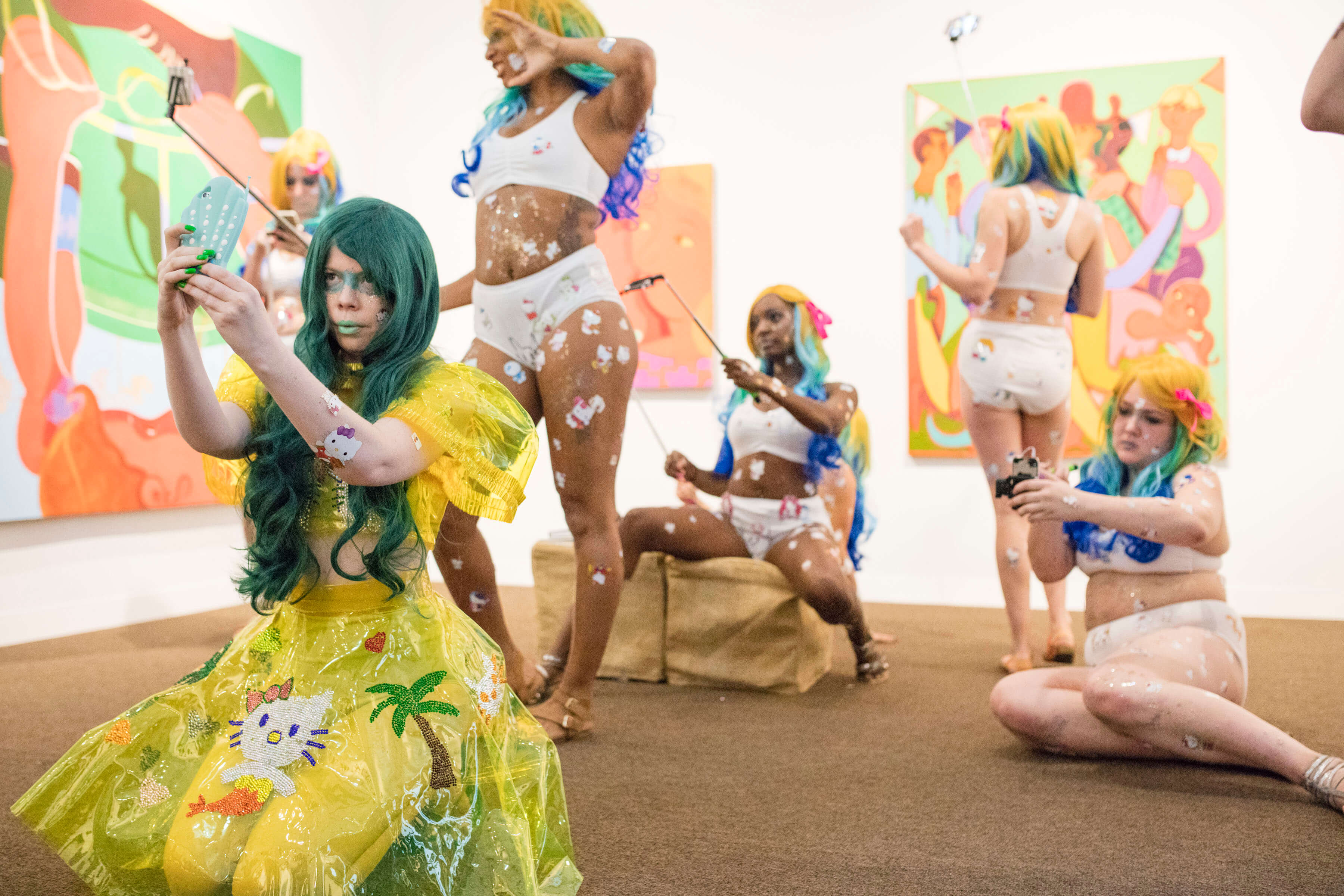
Kate Durbin: Social Selves
Kate Durbin understands her artistic approach as witnessing the events of her time. She immerses herself in social phenomena to reflect the behaviors of different social groups when they encounter each other; for example, performers come upon passersby on the streets, the artist performs for a sex chat audience, or Republicans and Democrats comment on each other’s Facebook posts. The Hello Selfie! performance series consists of four different iterations. The first one was recorded in Chinatown, Los Angeles, in 2014. Female performers, in white bikini slips and bustiers, covered their bodies with Hello Kitty stickers and walked around in public space. During the performance, they took selfies for an hour, which they uploaded to a public event wall on Facebook in real time. The female performers disrupted the urban scenery and caught the attention of passersby, but they neither reacted nor interacted with them. While some bystanders watched and took photos from a distance, others, mostly men, crossed the physical boundaries of the female performers by touching or hugging them in an unsolicited way. In Hello Selfie Men! (2015, Brisbane, Australia), the male performers appeared shirtless, wearing mundane trousers and shoes while taking selfies in the public space. During the performance, the men were neither approached, hugged, nor asked for selfies by passersby. A comparison of the two performances reveals the imbalanced treatment of women and men in public space, as men tend to overstep the boundaries of women. As a counterweight, Hello Selfie! explores the empowering process of selfie-taking and the fact that women take selfies for their personal pleasure and not to follow the male gaze. The women control their own image.
Biography
Kate Durbin is an artist, writer, and filmmaker from Los Angeles, California, USA. Her work includes Hello Selfie, which she performed for the Pulse Art Fair in Miami with Transfer Gallery, in Union Square with Transfer Gallery, in Los Angeles with Perform Chinatown, and with Arts Queensland in Australia. Other recent work includes Unfriend Me Now!, about Facebook, screened with Peer to Space in Berlin and shown at the Spring Break Art Fair and Femmebit Art Festival in Los Angeles. Kate has shown her artwork nationally and internationally. She has shown her work or performed at The Frye Museum, The Pulse Art Fair, MOCA Los Angeles, the Haifa Museum in Israel, SF MOMA, The Spring Break Art Fair in Los Angeles, DAM Gallery / peer to space in Berlin, The School for Global Art Down Under, The Poetry Project, The Queensland Poetry Festival, The Ashbery Home School, The Brisbane Writer's Festival, and more. Kate Durbins's work has been featured in The New York Times, The New Yorker, The Atlantic, Art in America, Art Forum, The Believer, XO Jane, Nylon, Casa Vogue, Yale's American Scholar, NPR’s Morning Edition, The Creator's Project, ArtSlant, DAZED, and elsewhere.
Interview with Kate Durbin (Los Angeles)
by Tina Sauerlaender (Berlin), April 15, 2020
Tina Sauerlaender: Hi Kate! In your works you slip into different roles. What kind of identities do you embody?
Kate Durbin: Even though they are individuals, and some of them are versions of myself, my characters also represent a kind of social self. They are like jester figures where I am embodying a role that has something to say about society. In my work I explore collective types of experiences or phenomena, like selfie taking, or fighting on social media about politics. I agree with Emile Durkheim, the Father of Modern Sociology when he said, "If you want to understand yourself, do not look inward. Look at the society that you are a part of and that created you."
TS: You have created several iterations of the Hello Selfie! (2014-2015) performances in public spaces with either female or mal performers who make selfies and simultaneously upload them to Facebook. What are the differences between the iterations?
KD: In Hello Selfie!, I explore the selfie phenomenon. I was thinking about how much we ignore people in our surroundings when we are on our phones. How that can, for women, be a kind of safe space–to ignore unwanted attention by going into your phone. I created that term passive aggressive performance art for Hello Selfie! as the performers are instructed to ignore the audience. They are intentionally not given what they want. I had been interested in this question of empowerment within that piece, this idea that the women are taking control over their own image, and how they present themselves to the world.
TS: At the time you have created the Hello Selfie! performances, particularly young females have been accused in the media of being narcissistic because they take selfies. Have you encountered such an accusation?
KD: It was absolutely this sort of criticism that young women in particular received during the time period, 2014 or so, that they were narcissists for taking so many selfies. I was thinking about a few things. One was the female gaze, I liked the idea of women taking their own selfies and the idea that it was not necessarily always for the male gaze. It was just for their own pleasure and enjoyment, and for other women too. But of course, it was tangled up in this broader sexist culture. I was thinking about once you put your selfie online, who does it belong to then? Can that be empowering if people are responding in sexist ways or society gets involved once other people start participating in that, and then what? I realized it became very complicated.
TS: In your work Hello Selfie! you address how the boundaries of women are overstepped on a daily basis, whereas the boundaries of men remain intact, as Hello Selfie Men! shows.
KD: In the first edition of Hello Selfie!, that was a surprise. I did not expect that to happen. Then, once it happened, I was like, "Of course, that would happen." Especially with people feeling entitled to come into our space and even touch us, touch the women. Interestingly, this did not happen with the men in Australia. People seemed almost afraid of the men although a few other men called them names for taking selfies. This I expected since Hello Selfie Men was pushing back against the idea that it is not masculine to have an image, to care about your appearance. But the fact that people were afraid of the men and gave them a wide berth whereas they literally physically touched the women circled back to this idea I was exploring in Hello Selfie! which is how violence towards women online corresponds to violence with women in IRL. So the internet is not such a safe space for women after all.
TS: How connected are your characters in your works to your own lived experience?
KD: I am exploring experiences I have had with society, and that I see other people experiencing too. The ways in which certain cultural phenomenon affect and change us all together, like when most of us got cell phones with the Internet on them. I always like to think about humans as not individuals so much, but as a collective like when you see ants on the anthill moving together and swarming. We do that, too. Especially in the US, people are so obsessed with the individual and thinking of themselves as very unique. It is not that the individual does not exist, or that everyone’s experience is the same–I mean, being a young woman online is very different than being a cis man. And yet, the idea of the individual is not the whole picture of human experience. And we do not always have so much free will or control over what we do. We are influenced by each other and by forces outside ourselves, like Facebook algorithms.